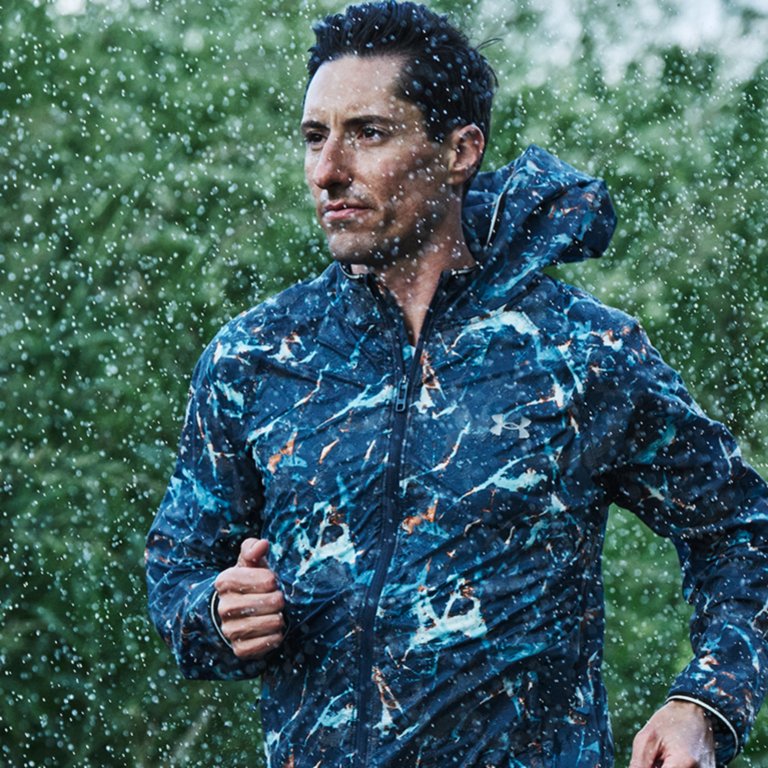The Benefits of Cold Weather Running
In fact, if you’re ready for it, Winter can be a great opportunity for runners. Taking a season off can set back your form and stride. Running during the Winter means you can maintain your routine instead of training back up after several months of lost progress. Similarly, taking the Winter months off can reduce your endurance. By staying consistent over the Winter, you can keep building up your endurance and stamina. Always consult with your physician before starting a new exercise program.
Tips for Running in the Cold
Whether you’re a seasoned year-round runner or you’re trying to motivate yourself to keep your routine going, there are a few things to keep in mind when it comes to cold-weather running. By following these tips, you can make your Winter runs easier and more enjoyable.
Hydrate
You won’t sweat as much in cold weather, so it’s easy to forget your hydration. Make sure you stay hydrated before and after your run, even if you don’t feel thirsty.
Check the Conditions
While cold weather is generally fine for runners, it’s important to know your limits. Keep in mind the temperature, the wind chill, and whether there’s snow or ice in the forecast.
Stay Visible
Visibility can be reduced during Winter with less daylight and poor weather conditions. Protect yourself from traffic and other pedestrians by using reflective clothing or accessories, and even consider wearing a small headlamp or carrying a flashlight.
Start Slow
Even if you’re a seasoned runner, give your body the time it needs to acclimate to the colder temperatures. Start with a walk, work up to a jog, then move into your run. When temperatures drop under 30 degrees, your joints will be stiffer and your muscles tighter. Doing a pre-run warmup inside and starting slowly will help prepare your muscles and joints for the run ahead.
Layering for Winter Running
Layering is a must for cold-weather running. The right number of layers depends on the weather and your personal tolerance for cold. You may have to do some trial and error to see what works for you. Keep in mind that your body will warm up as your run progresses. If you’re a little cold initially, you should feel comfortable in your layers a few minutes later.
Base Layer: Moisture-Wicking Gear
When it comes to layering for Winter running, starting with the right base layer clothing is key. You’ll want a base layer that helps you stay warm without trapping moisture or sacrificing breathability. Look for moisture-wicking fabrics like elastane or polyester to keep sweat away from your skin, and consider a base layer for added warmth and breathability.
Mid Layer: Vests & Hoodies
For added insulation, fleece jackets, hoodies, thermal long-sleeve shirts, and vests are great options. Many runners prefer vests, which help warm your core without affecting your arm swing.
Outer Layer: Running Jackets
Your outer layers are your first line of defense against the elements. Most Winter runners use a breathable, wind-resistant jacket that helps them stay dry. If you tend to run in the early morning or evening, ensure your outer layers have reflective strips for visibility.
Tights & Pants for Cold-Weather Running
Make sure to get Winter tights or pants that offer both breathability and insulation to maintain performance throughout your run. For pants, look for warm sweats or joggers snug enough that they won’t get in your way, but not so tight that they restrict your movements. For extremely cold conditions, it’s often helpful to layer your pants. Athletic leggings or tights can easily fit under other types of pants to provide extra insulation. Don’t overdo it because too many layers on your legs can restrict movement and limit your stride.
Winter Running Gear Accessories
From glare to dry air, there are a number of factors that can make a Winter run uncomfortable. Luckily, several accessories can help you stay focused on your run.
Avoid Snow Glare
Sunlight on snow can be incredibly bright, and if your area gets a lot of snowfall, bring sunglasses on daytime runs to protect your eyes from snow glare.
Headbands & Beanies
Protecting your head and ears in colder climates is important, so a breathable headband or beanie can do the trick. If you opt for a beanie, look for a thin one made from the materials we recommended above. Any of them can also help keep hair and sweat out of your face.
Protect Your Neck
It’s important to protect your neck and face on days with high wind chill. Look for a gaiter made from a material that wicks sweat and is soft and comfortable against your skin.
Gloves & Socks
Look for insulating gloves or mittens to keep your hands warm. You should also invest in a good pair of athletic socks made from merino wool or other moisture-wicking materials. Many runners opt for longer socks rather than ankle ones to maximize insulation and coverage.
Stay Hydrated
It’s no less important to hydrate in the cold than in the heat. Bring along a water bottle to carry or attach to your running belt.
What to Look For in Winter Running Shoes
Winter running shoes should provide support, stability, and traction on wet or slippery surfaces. Look for trail running shoes with high-traction outsoles to stay grounded on treacherous trails. It’s also important to keep your feet warm and dry. Look for shoes with water-resistant uppers to keep out snow, slush, and rain, and to provide ample insulation to help you stay comfortable throughout your run.
The Right Gear Can Help Keep You Moving
Don't let the elements of the season hinder your running routine or goals. You can maintain your pace and continue running comfortably in cold conditions with the appropriate Winter gear. Remember to prioritize staying warm, dry, and comfortable and opt for moisture-wicking fabrics instead of materials like 100% cotton or down. Make sure not to over-layer, which can restrict your movements and cause you to overheat. By focusing on your run rather than the cold, you can fully reap the benefits and rewards of running during the Winter months. So lace up your shoes, gear up appropriately, and embrace the invigorating experience of cold-weather running. Stay motivated, and keep pushing yourself to new heights.







